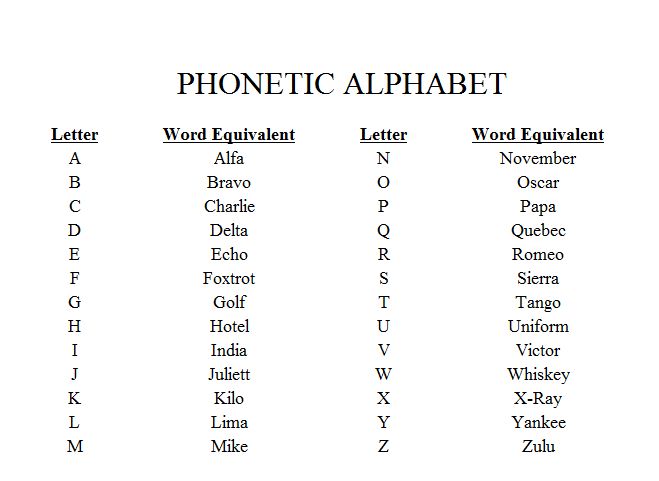

For example, “Alfa” is chosen over “Alpha” to ensure correct pronunciation, as is “Juliett” with two t’s. In the 1950’s the NATO version was developed to account for language discrepancies and pronunciation problems. The phonetic alphabetis a special alphabet used by the US Army and other Military branches. The first internationally recognised phonetic alphabet was created by the International Civil Aviation Organisation (ICAO). alphabet became known as Able Baker after the. As you can see from a sample of the phonetic alphabets in use by the British armed forces below, there were favouritisms with first names, places and food. adopted the Joint Army/Navy Phonetic Alphabet during 1941 to standardize systems among all branches of its armed forces. They are still in regular use today, especially S for sugar and F for Freddie.Īll official organisations communicating verbally created their own version of letter recognition. This was especially the case during wartime with the transmission of map grids or locations was a matter of life and death.īecause of their prolific use during the wars, phonetic spelling became part of normal parlance in society, especially when speaking over the telephone. When the communication was verbal only – such as over a radio –clarity was key. For example United States adopted the Army and Navy radiotelephony alphabet during 1941. In 1941, the United States began using the Joint Army/Navy Phonetic Alphabet, which was more com.

With technological advancements in the ability to transmit the human voice, a way of communicating similar sounding letters such as ‘T’, ‘B’, ‘C’ and ‘M’ & ‘N’ needed to be invented. During World War II many nations used their own spelling alphabets. Briton but bring breakfast to mind for an American. More accurately known as International Radiotelephony. maps individual soldiers records to their homes, globally, allowing us to see. The military phonetic alphabet was created to properly exchange communication by radio or telephone. But how did the phonetic alphabet all start?Ĭommunication at a distance has been accomplished by many means over the centuries, including visual signals like flashing lights and signals by flag, or sound signals like whistles, bells or more recently, Morse Code. You may spot spelling or grammatical errors in the transcripts as we have. We often use the phonetic alphabet to make the pronunciation of similar-sounding letters such as S and F distinctively clear to those we’re speaking to. One thing we need to get right when taking an order is details such as postcodes and product codes. But where did all those “S for sugar” terms come from?Īt Drainfast, we spend a lot of time talking to our customers over the phone. Ever heard, or had a phone conversation like that? Of course you have.


 0 kommentar(er)
0 kommentar(er)
